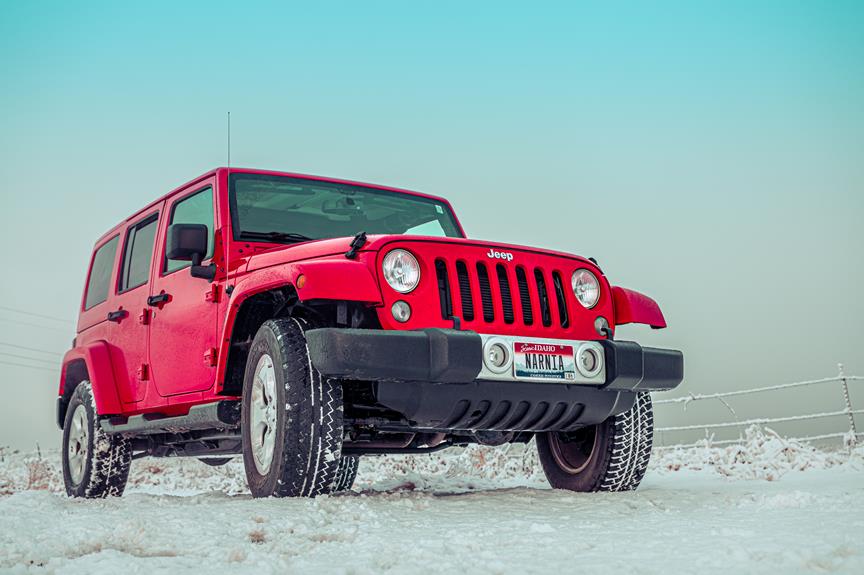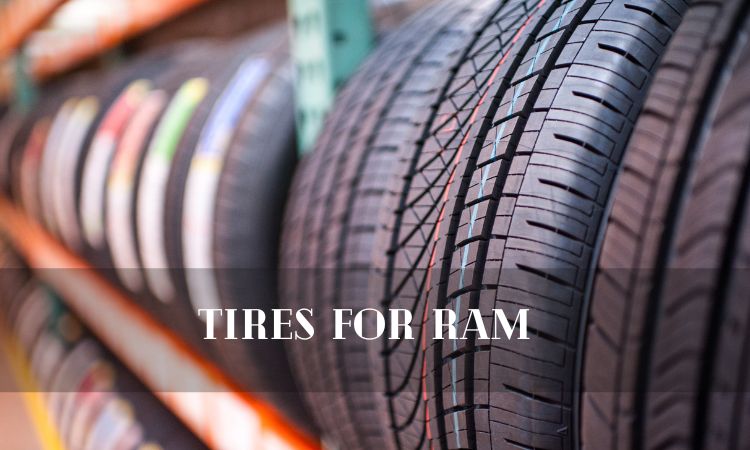Understanding Winter Tire Regulations
Did you know that winter tires can reduce the risk of accidents by up to 40% on icy roads? Understanding winter tire regulations is crucial for ensuring safety and compliance with the law.
In this article, we will explore the different types of winter tires, legal requirements, and tips for choosing the right ones. We will also debunk common misconceptions and discuss the benefits of using winter tires.
Join us as we delve into the world of winter tire regulations.
Key Takeaways
- Winter tires reduce the risk of accidents by up to 40% on icy roads.
- Proper maintenance and regular inspection are crucial for optimal performance.
- Storing winter tires properly during the off-season helps maintain their effectiveness.
- Understanding and decoding symbols on winter tires is crucial for compliance with regulations.
The Importance of Winter Tires
Winter tires are crucial for safe driving in icy and snowy conditions. When it comes to winter driving, having the right tires can make all the difference. Winter tire effectiveness is determined by a combination of factors, including the tire's tread pattern, rubber compound, and overall design. These tires are specifically engineered to provide superior traction and handling in cold weather conditions, allowing drivers to maintain control of their vehicles even on slippery surfaces.
To ensure the optimal performance of winter tires, proper maintenance is essential. Regularly inspecting the tires for any signs of wear or damage is crucial. Additionally, it is important to maintain the recommended tire pressure, as this can affect the tire's performance on icy and snowy roads. Rotating the tires regularly can also help to ensure even wear and prolong their lifespan.
Winter tire maintenance also involves storing them properly during the off-season. It is recommended to store winter tires in a cool, dry place away from direct sunlight. Before storing, it is important to clean the tires and remove any debris or dirt that may have accumulated. Storing them upright and avoiding contact with oil, gasoline, or other chemicals is also essential to maintain their effectiveness.
Different Types of Winter Tires
When it comes to choosing winter tires, there are two main types to consider: studs and studless. Studs provide superior traction on icy surfaces, while studless tires are designed to perform well in snowy conditions.
Additionally, there is the option of using all-season tires that are rated for winter use.
The choice between these different types of winter tires ultimately depends on the specific weather and road conditions in your area, as well as your personal preferences for traction and safety.
Studs Vs Studless
The performance of studless winter tires has improved significantly over the years, making them a popular choice among drivers looking for enhanced traction and safety on icy roads. When comparing studs vs studless tires, it is important to consider their performance on different road conditions.
Studless tires, also known as winter tires, utilize advanced rubber compounds and unique tread patterns to provide superior grip on snow and ice. They are designed to bite into the snow and maintain optimal traction, even in extreme winter conditions. One of the main advantages of studless tires is their versatility. They perform well on both dry and wet pavement, offering a smooth and quiet ride.
However, studless tires may not be as effective on extremely icy surfaces compared to studded tires, which use metal studs to provide additional traction. Studded tires excel in icy conditions, but they can be noisier and less comfortable on dry roads.
Ultimately, the choice between studs vs studless tires depends on the individual's driving needs and the specific road conditions they encounter.
Snow Vs All-Season
One must consider the advantages and disadvantages of snow and all-season tires when deciding which type of winter tire to use.
Snow tires, also known as winter tires, are specifically designed for cold weather and snowy conditions. They have a unique tread pattern and a softer rubber compound that stays flexible in low temperatures, offering better traction on icy and snowy surfaces. Snow tires are essential for safe winter driving, as they provide improved grip and handling.
On the other hand, all-season tires are designed to provide a balance between performance and year-round usability. While they can handle light snow and cold temperatures, they do not offer the same level of traction and safety as snow tires. Therefore, it is important to consider the specific weather conditions and driving needs when choosing between snow and all-season tires.
Transitioning to the next section, let's now explore the importance of traction and safety when it comes to winter driving.
Traction and Safety
How do different types of winter tires ensure traction and safety on icy and snowy roads, and which one is more effective? Winter tires, also known as snow tires, are specifically designed to provide optimal traction in cold weather conditions. These tires have unique features that allow them to perform well on icy and snowy roads, ensuring the safety of drivers. Let's compare two commonly used types of winter tires: studded tires and studless tires.
| Studded Tires | Studless Tires | |
|---|---|---|
| Traction | Excellent | Good |
| Noise | High | Low |
| Durability | Good | Excellent |
| Cost | High | Moderate |
| Tire Pressure | Higher pressure required | Standard pressure |
Studded tires feature metal studs that grip the ice, providing excellent traction. However, they can be noisy and may cause damage to road surfaces. On the other hand, studless tires use advanced tread designs and rubber compounds to enhance grip on icy and snowy surfaces. They offer a quieter ride and have better durability. When choosing between the two, it is important to consider factors such as noise, cost, and road damage. Additionally, maintaining proper tire pressure is crucial for maximizing traction control in winter conditions.
Understanding Winter Tire Symbols and Markings
Understanding winter tire symbols and markings is crucial for ensuring the safety and performance of your vehicle during cold weather conditions.
These symbols and markings provide valuable information about the tire's tread pattern, traction capabilities, and temperature ratings.
Decoding Tire Symbols
In order to ensure compliance with winter tire regulations, it is essential to accurately interpret and decode the various symbols and markings found on tires. These symbols provide important information about the tire's size, load capacity, speed rating, and other specifications.
One important symbol to pay attention to is the tire pressure indicator, which indicates the maximum air pressure the tire can handle. Maintaining proper tire pressure is crucial for optimal performance and safety.
Regular tire maintenance, including checking the tire pressure and inflating or deflating as needed, is necessary to ensure a smooth and safe ride. By understanding and decoding these symbols, drivers can make informed decisions about their tire choices and ensure they meet the safety standards explained in the subsequent section.
Safety Standards Explained
Several safety standards and regulations govern the use of winter tires, ensuring that drivers are equipped with tires that meet the necessary requirements for safe winter driving.
Winter tire testing is a crucial aspect of these regulations, as it evaluates the performance of tires in various winter conditions. These tests assess traction on snow and ice, braking distance, handling, and stability, among other factors.
The results of these tests are then used to determine if a tire meets the required safety standards.
Additionally, tire labeling regulations play a significant role in providing consumers with essential information about the performance and suitability of winter tires. These regulations require manufacturers to provide detailed information on the tire label, including its cold weather capabilities, traction abilities, and temperature range.
Choosing the Right Tires
Evaluating the winter tire symbols and markings is essential for drivers in order to make an informed decision when choosing the right tires. When considering tire size, it is important to select the appropriate dimensions that match the specifications of your vehicle. This ensures optimal performance and safety on winter roads.
Additionally, the tread pattern plays a crucial role in providing traction on slippery surfaces. Deep grooves and sipes are designed to effectively grip the road and channel away snow and slush.
Understanding the symbols and markings on winter tires can help drivers identify the tire's capabilities and compatibility with their specific needs. By considering tire size and tread pattern, drivers can select the most suitable winter tires to enhance their vehicle's performance in adverse weather conditions.
Now, let's delve into the legal requirements for winter tires.
Legal Requirements for Winter Tires
Our company's policy mandates that all employees must equip their vehicles with winter tires to comply with the legal requirements for safe driving during the winter season. Winter tires, also known as snow tires, are specifically designed to provide superior traction and control on snowy and icy roads.
Winter tire maintenance is crucial to ensure their effectiveness and longevity. Here are some important points to consider:
- Importance of snow tires:
- Enhanced traction: Winter tires are made with a special rubber compound that remains flexible even in freezing temperatures, allowing for better grip on slippery surfaces.
- Shorter braking distances: The unique tread pattern on winter tires helps to channel away snow and slush, reducing the risk of skidding and enabling shorter stopping distances.
- Improved handling: Winter tires provide better control and stability when driving in winter conditions, minimizing the chances of accidents.
- Winter tire maintenance:
- Regular inspections: It is important to check the tread depth, tire pressure, and overall condition of the winter tires regularly to ensure optimal performance.
- Proper storage: When not in use, winter tires should be stored in a cool, dry place away from direct sunlight and chemicals to prevent damage or degradation.
Tips for Choosing the Right Winter Tires
When selecting winter tires, it is essential to consider factors such as road conditions and vehicle type in order to ensure optimal performance and safety. One of the key aspects to consider is choosing the right tire size for your vehicle. The tire size plays a crucial role in the overall performance of the tires, including traction and handling on snow and ice. It is recommended to consult your vehicle manufacturer's recommendations or a tire professional to determine the appropriate tire size for your specific vehicle.
In addition to choosing the right tire size, winter tire maintenance is also essential for their effectiveness and longevity. Regularly checking the tire pressure is important, as cold temperatures can cause the tire pressure to drop. It is recommended to check the tire pressure at least once a month during the winter season.
Proper tread depth is another crucial factor to consider. Winter tires should have a tread depth of at least 6/32 of an inch to provide sufficient traction on slippery surfaces. If the tread depth is below this threshold, it is advisable to replace the tires.
How to Properly Install Winter Tires
To ensure a secure and efficient installation, it is imperative that you carefully follow the recommended steps and use appropriate tools when installing winter tires. Here are some winter tire installation tips to help you navigate this process smoothly:
- Start by selecting the right winter tires for your vehicle. Consider factors such as size, tread pattern, and rubber compound.
- Before installation, inspect the tires for any damage or uneven wear. This will help identify potential issues and ensure optimal performance.
- Use a torque wrench to tighten the lug nuts to the manufacturer's specifications. This will ensure proper wheel alignment and prevent damage to the tires.
- Install the winter tires on all four wheels for balanced traction and stability. Mixing winter and all-season tires can compromise your vehicle's performance.
- Inflate the tires to the recommended pressure, as specified by the vehicle manufacturer. This will maximize their contact with the road surface and enhance grip.
Proper winter tire maintenance is crucial for their longevity and performance. Neglecting maintenance can lead to reduced traction and compromised safety. In the next section, we will discuss some essential tips for maintaining and storing winter tires.
Maintaining and Storing Winter Tires
Regularly inspecting and rotating your winter tires, along with properly storing them during the offseason, are key practices to ensure their longevity and optimal performance. Maintaining winter tires is crucial for safety and efficiency on snowy and icy roads.
When it comes to storing winter tires, there are a few important steps to follow.
Firstly, before storing your winter tires, make sure they are clean and dry. Remove any dirt, debris, or salt buildup from the tires using a mild soap and water solution. This will prevent corrosion and damage during storage. Once they are clean, allow the tires to dry completely before storing them.
Next, it is important to store winter tires in a cool, dry, and dark place. Exposure to sunlight and extreme temperatures can degrade the rubber and reduce the lifespan of the tires. It is recommended to store them in a garage or a dedicated tire storage area.
Additionally, it is advisable to store winter tires in an upright position or use a tire rack to prevent deformation. Stacking or piling the tires can cause them to lose their shape and affect their performance.
Lastly, it is essential to protect the tires from moisture and dust by using tire covers or bags. This will help maintain the quality of the rubber and prevent cracking or dry rot.
Common Winter Tire Misconceptions
What are some common misconceptions about winter tires?
Winter tires play a crucial role in ensuring safety and performance during the cold winter months. However, there are some common misconceptions that people have about these specialized tires. Let's take a closer look at them:
- Misconception 1: Winter tires are only necessary in areas with heavy snowfall.
- Contrary to popular belief, winter tires are not just for snowy conditions. They are designed to provide optimal performance in temperatures below 45°F (7°C), regardless of the presence of snow or ice. Even in areas with milder winters, temperature fluctuations can affect tire grip and performance.
- Misconception 2: All-season tires are just as good as winter tires.
- While all-season tires offer decent performance in various weather conditions, they are not designed specifically for winter conditions. Winter tires have unique tread patterns and rubber compounds that provide better traction, braking, and handling on snow and ice-covered roads.
Understanding these misconceptions is essential for making informed decisions about winter tire maintenance and performance. By debunking these myths, drivers can ensure their safety and enjoy the benefits of using winter tires during the winter season.
Benefits of Using Winter Tires
Winter tires significantly enhance traction and improve road grip, enabling drivers to navigate safely through icy and snowy conditions. The benefits of using winter tires are numerous and can greatly contribute to road safety during the winter months.
These specialized tires are designed with unique tread patterns and rubber compounds that are optimized for cold weather conditions. The tread patterns feature deeper grooves and sipes, which help to channel away snow and slush, providing better grip on slippery surfaces. Additionally, the rubber compounds used in winter tires remain flexible in cold temperatures, ensuring better contact with the road. This flexibility allows the tires to conform to the road surface, maximizing traction and reducing the risk of skidding or sliding.
Improved traction is crucial in winter driving, as it allows drivers to accelerate, brake, and steer with more control and confidence. Winter tires also provide shorter braking distances on icy and snowy roads, reducing the risk of accidents.
Winter Tire Regulations Around the World
Enforcement agencies across different countries consistently uphold and enforce winter tire regulations to ensure road safety in icy and snowy conditions. These regulations aim to reduce the risk of accidents and improve overall traffic flow during the winter season.
Two regions that have implemented strict winter tire regulations are Europe and Canada.
In Europe, winter tire regulations vary by country. Some countries, such as Germany and Austria, have mandatory winter tire laws that require vehicles to be equipped with winter tires during specific periods or under specific weather conditions. Other countries, like France and Italy, have less stringent regulations that recommend the use of winter tires but do not enforce them.
In Canada, winter tire regulations are more standardized across the country. In provinces like Quebec, Ontario, and British Columbia, it is mandatory for drivers to have winter tires installed on their vehicles during the winter months. Failure to comply with these regulations can result in fines and penalties.
Overall, winter tire regulations in Europe and Canada prioritize road safety and encourage drivers to use appropriate tires for winter conditions. These regulations not only protect individuals on the road but also contribute to the smooth functioning of transportation systems during challenging weather conditions.
Frequently Asked Questions
Are Winter Tires Required by Law in All Countries?
Winter tire regulations vary by country. While some countries have laws mandating the use of winter tires during specific seasons or weather conditions, not all countries have such requirements. It is important to familiarize oneself with the specific regulations in each country.
Can I Use All-Season Tires Instead of Winter Tires During the Winter Months?
Using all-season tires in winter weather is possible, but not recommended. While they may provide adequate traction in light snow, they are not designed to handle extreme winter conditions. The pros of using all-season tires include convenience and cost savings, but the cons include reduced traction and increased risk of accidents.
What Are the Consequences of Not Using Winter Tires in Areas With Winter Weather Conditions?
Not using winter tires in areas with winter weather conditions can have significant consequences. It can impact road safety by reducing traction and increasing the risk of accidents. It can also have economic implications due to increased insurance claims and vehicle damage.
How Often Should Winter Tires Be Replaced?
Winter tires should be replaced when they exhibit signs of uneven wear, such as reduced tread depth or visible damage. Regular inspections and monitoring tire performance are essential to ensure optimal safety and performance during winter weather conditions.
Are There Any Specific Regulations Regarding the Use of Studded Winter Tires?
Studded winter tires regulations vary by jurisdiction, with some areas allowing their use only during specific months or on certain road types. Benefits of using studded winter tires include improved traction on icy surfaces and enhanced braking performance.
Conclusion
In conclusion, understanding winter tire regulations is crucial for every driver navigating icy and snowy roads. By familiarizing ourselves with the different types of winter tires, their symbols and markings, and the legal requirements for their use, we can ensure our safety and the safety of others.
Choosing the right winter tires, maintaining and storing them properly, and dispelling common misconceptions will further enhance our winter driving experience. Embracing the benefits of winter tires, we can confidently face the challenges of winter roads and arrive at our destinations unharmed.







